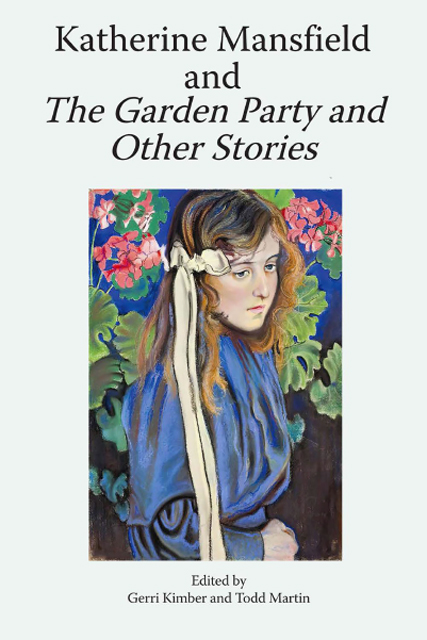‘Passion in Movement’: Katherine Mansfield – Gesture, Motion and Dance
Published online by Cambridge University Press: 03 June 2023
Summary
In Katherine Mansfield’s story ‘At the Bay’ (1921), Pip imagines finding an emerald while digging in the sand: ‘The lovely green thing seemed to dance in [… his] fingers’; later in the story, Mansfield repeats the metaphor to describe Linda Burnell with ‘tears [that] danced in her eyes’ and a photo of Mr Kember that shows him to be ‘a perfect dancer’. Mansfield’s writing records not just her interest in dance, but the meaning she finds through movement. Antony Alpers conjectures that some of her earliest, emotionally honest private writings occur after ‘an incident following a ball [at which] Kathleen sat out a dance with one of her partners and an adventure followed’. She reminds herself at the time to ‘Be strong, be kind, be wise […] Be more than woman.’ As will be shown here, Mansfield integrated dance that she saw performed and represented in visual arts as a trope to examine women’s inner lives; her observations of movement and gesture culminate with two important stories which connect the body in motion and epiphany: ‘Her First Ball’ (1921) and ‘Marriage à la Mode’ (1921), both published in The Garden Party and Other Stories (1922). These stories stress the modern woman’s need for strength and wisdom as they invite the reader to observe women through movement. Mansfield goes beyond a simple metaphor of dance; instead, she builds on her early writings and life-long influences to choreograph her stories and to vivify her letters. In the face of static, societal expectations, Mansfield affirms self-expression through dance, movement and gesture.
Mansfield expresses an expanded awareness of the interrelation of dance, music and writing after she returns to London in 1908: she links the nuances of artistic expression under the umbrella of the word ‘tone’. In a letter to Garnet Trowell after a music recital she had heard, she writes, ‘I am staggered by [… the pianist’s] playing, by her tone, which is the last word in tonal beauty and intensity and vitality.’ Shortly afterwards, Mansfield saw Maud Allan dance in her Vision of Salome at the Palace Theatre of Varieties, and Mansfield links her goals as a writer with her understanding of tone because of Allan’s intensity and vitality on stage: ‘I have a strange ambition […]
- Type
- Chapter
- Information
- Publisher: Edinburgh University PressPrint publication year: 2022

